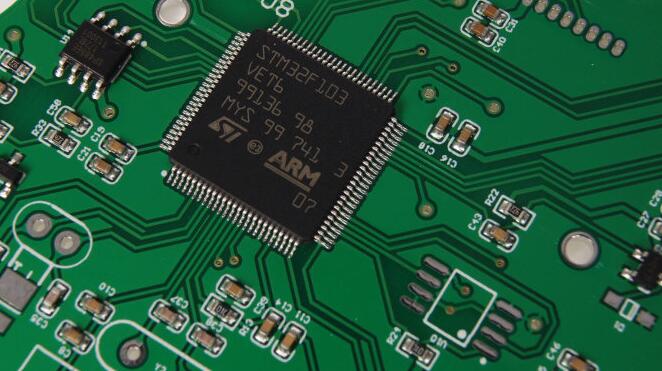Why do I need to make SMT fixtures for PCB assembly?
Why the PCB board (pcb assembly) needs to be very flat during the soldering production process? Why do PCB boards(pcb assemblies) with board thickness less than 1.0mm need to be supported by SMT fixtures? Next, I will take you to find out!
With the development of the electronics industry, the development of PCB boards(pcb assemblies) is following the thinning of substrates, multi-layer circuits, refined circuit geometry, miniaturization and precision of supporting components, increased component density, and high reliability. The development of other directions, the conversion of plug-in devices to SMD, has given birth to the wide application of SMT (surface mount technology) in electronic products. The key equipment in SMT production-the placement machine has also been improved and developed accordingly. In the process, there are often poor soldering of some thin boards below 1.0mm, especially the emergence of CSP devices and intensive applications, which require higher and higher flatness of the PCB (pcb assembly).
The welding production of each product has to be verified in many aspects. Sometimes even if we have done very well in all aspects and considered very meticulously, it is still possible to make some jokes with us in actual production, leading to welding failure. The process has been considered very well, but there are exceptions, whether there is a management error, or a loophole in the process, a mistake in the operation of the personnel, or a failure of the equipment, please see the following case analysis:

A PCBA project where the customer designs the board by himself. The customer's product layout design is compact, with multiple BGA chips and 0201 package size resistors on both sides. The thickness of the finished PCB is 0.80mm, and the PCB is a jigsaw and has a craft edge.
According to our conventional way of understanding, the PCB board (pcb assembly) has a technological edge, and the layout is perfect, and the track can be smoothly followed during welding production. However, in our pre-natal evaluation, the process engineer prescribes a prescription and requires an SMT fixture to be welded. The customer feels that his head is buzzing for a while, why do he need an SMT fixture? ? Be puzzled.
Then let's talk about the hazards of the flatness of this thin-board PCB.
On the SMT production line, if the PCB board is not flat, the equipment will be inaccurately positioned.
A. Printing-PCB board (pcb assembly) and the steel mesh are not in the same plane, which will cause the printed tin to be thick, sharp, even tinted, and tinted.
B. SMD ------ It will cause flying parts, offset, tin connection, and component damage of SMD components.
C. IR-Reflow------- will cause chip soldering, tombstone resistance and capacitance components, etc.
If the solder paste is sharpened, other problems such as short circuits after soldering may also occur.
Then why are there such defects?
It turns out that when the thickness of the PCB board (pcb assembly) is less than 1.0mm, the strength of the entire panel board will be greatly reduced (weakened) when the connection position or v-cut groove is added, because the V-cut depth is the thickness of the board 1/3. Strengthen the middle of the PCB board, and the supporting framework-glass fiber cloth V is broken, which causes the strength to become significantly softer. If it is not supported by a fixture, it will affect the process below the PCBA.
First, the printing link --- the support of the top pin, whether it can withstand the pressure strength of the squeegee printing, consider whether there is a space at the bottom of the BGA chip to place the top pin. In addition, if there are SMT devices within 1.5-3mm around the top pin. The top pin is also There is a risk of topping the device.
2. SMD---Whether the top pin can support the deformation compensation of PCB board (pcb assembly).
3. IR-Reflow reflow soldering----- PCB board (pcb assembly) will warp when the furnace temperature reaches the Tg temperature during the furnace-----If the support strength is insufficient during the reshaping process, it will cause the quality The root cause of the hidden danger and potential failure risk.
A1 printing---Compact layout. The printed thimble cannot be distributed stably to support the top surface. The thickness of the PCB is less than 1.0mm. After a reflow soldering on the BOT surface, there will be a certain amount of deformation in the PCB assembly before the TOP is produced.
The unevenness of the PCB board will cause printing difficulties and affect quality risks, such as missed printing, thick tin, sharpening, continuous tin, and less tin.
B1 SMD---PCB flatness, deformation, insufficient support strength, and mounting problems caused by such as: offset, false welding, damaged parts, etc.
C1 Reflow soldering-PCB flatness, deformation, insufficient support strength, soldering quality problems after IR-Reflow. False soldering, tombstones, tinning, chip pillow effect, etc.
When we use SMT special fixtures, strengthen the support on the fixtures and avoid the position of SMT devices. The PCB board is placed on the fixture, so that the overall support strength of the PCB board (pcb assembly) can be uniform and reliable (fixture- --Printing + patching + IR-Reflow can be universal)